Peter Smith's Blog, page 16
November 27, 2023
Back at last to matters categorial
 Well, all that took much, much longer than planned! Having spent days sorting the shared books round the house, I was on a roll, and found myself seriously tackling my study for the first time in years. In the end, perhaps seven or eight feet of books have gone. And I feel all the better for it. A lot of second-division philosophy I certainly won’t be looking at again; no more baleful stares from those books that I’ll now never get round to reading; a couple of feet of mathematics books has gone too, texts I surely won’t seriously look at again (and which anyway are all available as PDFs in the familiar place we don’t talk about). But that leaves a well-populated wall. And I’ve kept most of Logic Corner for now too. Because I have plans …
Well, all that took much, much longer than planned! Having spent days sorting the shared books round the house, I was on a roll, and found myself seriously tackling my study for the first time in years. In the end, perhaps seven or eight feet of books have gone. And I feel all the better for it. A lot of second-division philosophy I certainly won’t be looking at again; no more baleful stares from those books that I’ll now never get round to reading; a couple of feet of mathematics books has gone too, texts I surely won’t seriously look at again (and which anyway are all available as PDFs in the familiar place we don’t talk about). But that leaves a well-populated wall. And I’ve kept most of Logic Corner for now too. Because I have plans …
Of course, most of you will think that that is still a quite ridiculous number of books. But then I belong to that thinning generation of academics for whom (in many cases) buying books was all tied up with our identity in what I suppose now seems rather foolish ways.
That major sort-out was all very distracting, though very good to get done. But I’ve meanwhile been tinkering away on and off with Category Theory II. In fact, I’ve made quite a few little presentational and other changes in earlier chapters, as well as splitting the material on Yoneda into two chapters again, and then I have newly tidied the chapter on representables. I guess I still want to say a little about the more elementary implications of Yoneda, but enthusiasts can download the latest version here. That leaves just the four chapters on Galois connections and adjunctions for initial revision. Then we’ll have to see how things stand. But the way things are going, Parts I and II together will already be a little over 400 pages which is surely enough for what is supposed to be a Gentle Introduction (which I never really planned to write in the first place). So at the moment I’m inclined to do no more than tie up a loose end or two and then stop.
The post Back at last to matters categorial appeared first on Logic Matters.
November 9, 2023
One in twenty
 One way or another, a newly-acquired book or two must come into the house most weeks. So in a year, that’s much more than a shelf’s worth. After a few years, even with occasional donations of books to Oxfam, there are far too many books in piles around the place, on furniture, on the floor, slotted in randomly here and then. So there comes that time again when Something Must Be Done. Perhaps one in twenty really needs to go. And this time, everything ought to be taken off shelves and dusted down …
One way or another, a newly-acquired book or two must come into the house most weeks. So in a year, that’s much more than a shelf’s worth. After a few years, even with occasional donations of books to Oxfam, there are far too many books in piles around the place, on furniture, on the floor, slotted in randomly here and then. So there comes that time again when Something Must Be Done. Perhaps one in twenty really needs to go. And this time, everything ought to be taken off shelves and dusted down …
So that was a week’s worth of mornings, just for the books at one end of the living room. “Will we ever read this again?”, “Good lord, I’d quite forgotten we had a copy of that”, “Do you remember finding that book in …?”, “Oh, it is more than time to reread …”, “Oops, we seem to have bought two copies of …”, “Hold on a moment, let me just remind myself what this is about …”, “Do you remember that exhibition …?”. And so it goes. It all takes time. But job done, and the shelves look a lot tidier. Bags of books line the hall waiting to be distributed to charity shops. Not one in twenty of course. But enough.
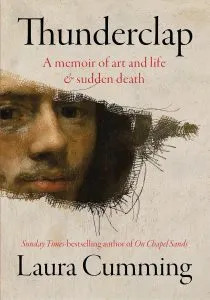 A recent report of research from Imperial College indicated that one in twenty are affected by, as it were, Very Long Covid, with symptoms lasting even a year. I seem to be in the unlucky group. Over six months on from catching Covid on a lovely trip to Perugia, I’m still getting chest discomfort and fatigue, of a pretty annoying kind. So, some days, a morning’s book clearing is stupidly tiring. Not much writing then gets done on matters categorial …
A recent report of research from Imperial College indicated that one in twenty are affected by, as it were, Very Long Covid, with symptoms lasting even a year. I seem to be in the unlucky group. Over six months on from catching Covid on a lovely trip to Perugia, I’m still getting chest discomfort and fatigue, of a pretty annoying kind. So, some days, a morning’s book clearing is stupidly tiring. Not much writing then gets done on matters categorial …
But I can read. What has been particularly enjoyable in the last few weeks? I don’t think I can put it better than this, from the blurb: “In Thunderclap, Laura Cumming reveals her passion for the art of the Dutch Golden Age and her determination to lift up the reputation of Fabritius. She reveals the Netherlands, where – wandering the narrow streets of Amsterdam, driving across the flatlands, or pausing at a quiet waterfront – she encounters the rich reality behind the shining beauty of Vermeer and Rembrandt, Hals and de Hooch. She shares too her relationship with her father, the Scottish artist James Cumming, who had his own deep connection to Dutch painting, and who taught her about colour, light and the rewards of looking deeply. This is a book about what a picture may come to mean: how it can enter your life and change your thinking in a thunderclap, a sudden clarity of sight. This is also a book about the precariousness of human life – the way it may be snatched from us in an instant. What can art do to sustain us? The work that survives tells its own compelling story in these pages.” I thought in advance that that must be over-selling the book! But I did find it hugely engaging. Especially when read with iPad to hand, to find reproductions of more of the paintings Laura Cumming mentions. Warmly recommended … Thunderclap stands out among books I’ve read recently — one in twenty, perhaps.
The post One in twenty appeared first on Logic Matters.
October 30, 2023
Yoneda Without (Too Many) Tears
The newly revised chapter from Category Theory II is now a draft stand-alone PDF, Yoneda Without (Too Many) Tears.
All comments and corrections welcome before I perhaps put a revised version on the arXiv. It took me some effort back in the day to get this clear enough in my own mind; and I have tidied up the presentation, perhaps some others might appreciate a helping hand through the proof!
The post Yoneda Without (Too Many) Tears appeared first on Logic Matters.
October 29, 2023
Bewildered of Cambridge writes …
A few posts back, I quoted Tom Leinster: “The level of abstraction in the Yoneda Lemma means that many people find it quite bewildering.” I can relate to that. Just a couple of days ago I managed to bewilder myself for a long afternoon, and it took me an embarrassing amount of time to locate where I’d composed arrows the wrong way around (contravariance bites back). I have a rule when writing this sort of expository stuff not to look things up, on the principle that working things out again for myself from first principles much increases the chances of being able to explain the topic lucidly to others. But the rule has its downside sometimes!
Anyway …
There is now a fifteen page chapter on Yoneda (the theorem, not its implications which I plan to tackle next). I take things in three stages, proving what I (non-standardly) call the Restricted Yoneda Lemma, and then the Intermediate Yoneda Lemma, before getting to the fully caffeinated Yoneda Lemma. The hope is that, chunked up like this, each of the three stages almost writes itself …
For enthusiasts, the latest version of Category Theory II is here.
The post Bewildered of Cambridge writes … appeared first on Logic Matters.
October 26, 2023
Academia.edu anyone?
I have long, long since unsubscribed from all e-mails from academia.edu, and I’ve very largely ignored it for years. I‘ve certainly never dabbled with the “pro” version. I did upload copies of IFL and IGT when I had recovered the copyright, and later replaced the old TYL Guide. But otherwise I’ve kept my presence there pretty minimal and not used the site at all.
However, I was alerted recently to the fact that a (very) old version of my notes of category theory were still being downloaded from there. So I thought I should either replace those notes or perhaps just remove myself from academia.edu (as I had got the impression that it really isn’t in favour).
I was a bit staggered to find, then, that despite the non-activity on my part and despite still having only eight live pieces there, the site reports 175K “views” over the years. I’m pretty sceptical. But I did find hundreds of recent messages from downloaders that I’d not acknowledged (apologies, then, to those who thought I was just being rude!).
So I’ve decided to keep my profile there for the moment. But is academia.edu really much used these days? What do people use instead, if anything?
The post Academia.edu anyone? appeared first on Logic Matters.
October 22, 2023
Schubert on Sunday 6: D. 898, Noa Wildschut, Alexander Warenberg and Elisabeth Brauss
A delightful unexpected surprise this week. I quite serendipitously discovered, just the preceding day, that Elisabeth Brauss was giving a short concert on Thursday for the Cambridge University German Society. And some last minute tickets were available to non-members. So off we went. (An unusual experience too, to find ourselves the only ancients at a recital!)
Elisabeth was just wonderful, playing with such verve and colour and subtlety and evident enjoyment. And we in our turn hugely enjoyed her first piece, Ravel’s Le Tombeau de Couperin. She is playing this soon at Wigmore Hall, together with a Schubert sonata and Schumann’s Carnaval. For Thursday, she chose the Schumann — which is obviously great fun to play, and pleased her enthusiastic audience. But it is far from my favourite piece, and I would so love to have heard her Schubert.
So here she is playing his Piano Trio No. 1 four years ago, with her now frequent duo partner Noa Wildschut, and the cellist Alexander Warenberg, all ridiculously young. Just astonishing. And also in these dark times, a moment of beauty and hope.
The post Schubert on Sunday 6: D. 898, Noa Wildschut, Alexander Warenberg and Elisabeth Brauss appeared first on Logic Matters.
October 20, 2023
How bewildering is the Yoneda embedding?
There’s now another one-chapter update for Category Theory II.
There’s some minor earlier tinkering, but Chapter 37 has been considerably revised. The proofs leading up to what I call the Restricted Yoneda lemma and the Yoneda Embedding Theorem have been tidied up, and should be much clearer. And the final section “Yoneda meets Cayley” — which was a mess, almost incoherently so — is now crisp and clear. I hope!
Tom Leinster has written “The level of abstraction in the Yoneda Lemma means that many people find it quite bewildering.” While Awodey calls it “the single most used result” of category theory. So: bewildering but centrally important?
Well, I really do hope the decaffeinated version of Yoneda in Chapter 37 really is plain sailing. There’s basically one small idea — you can use a  -arrow
-arrow  very simply to construct a natural transformation between hom-functors
very simply to construct a natural transformation between hom-functors  and
and  — and then all the rest is pretty much applying definitions in obvious ways. So far, I hope, not bewildering at all!
— and then all the rest is pretty much applying definitions in obvious ways. So far, I hope, not bewildering at all!
The post How bewildering is the Yoneda embedding? appeared first on Logic Matters.
October 12, 2023
Bluesky?
I put myself on the waiting list for a Bluesky invite code more or less at the beginning, and then again after a few months, but have never got one. Is this other people’s experience too?
The post Bluesky? appeared first on Logic Matters.
October 11, 2023
What to read?
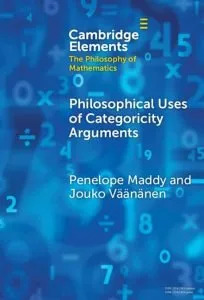 What recent, new, and forthcoming logic/phil. maths books have caught your attention?
What recent, new, and forthcoming logic/phil. maths books have caught your attention?
This first little book, forthcoming in January from CUP in the very mixed quality Cambridge Elements series, looks promising. Maddy, at least, reliably writes interestingly and well (hopefully, she keeps her co-author from getting too mired in technicalities). And the topic is a great one. “This Element addresses the viability of categoricity arguments in philosophy by focusing with some care on the specific conclusions that a sampling of prominent figures have attempted to draw … It begins with Dedekind, Zermelo, and Kreisel, casting doubt on received readings of the latter two and highlighting the success of all three in achieving what are argued to be their actual goals. These earlier uses of categoricity arguments are then compared and contrasted with more recent work of Parsons and the co-authors Button and Walsh. … the Element concludes that categoricity arguments have been more effective in historical cases that reflect philosophically on internal mathematical matters than in recent questions of pre-theoretic metaphysics.” So this is certainly on my list.
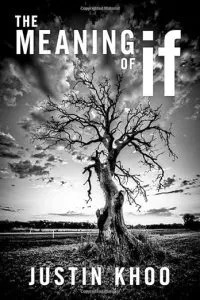 I recently looked at Justin Khoo’s The Meaning of If published last year by OUP. Anyone writing an intro logic book (and I still hanker after a third edition of IFL) wants — or ought to want — to have something sensible to say about the relation of ‘if’ and ‘⊃’, though some do duck the task. So I’m always interested to see what people are writing these days on the topic. But I can’t say I got much out of this. One of the phenomena here is that, however ‘if’s work in the wider world, in mathematics regimenting them by a connective ‘⊃’ governed by the usual rules (acceptable to classical logic and constructive logic alike) seems to work a treat, at least once we distinguish plain ‘if’s from the ‘imply’s we regiment using turnstiles. But there isn’t a word about this in Khoo’s book (you look in vain for anything about mathematics, or indeed about “conditional proof”, or “supposition”, and so on). So whatever the virtues of this book — which I confess didn’t impress me — it will be of no real interest to logicians.
I recently looked at Justin Khoo’s The Meaning of If published last year by OUP. Anyone writing an intro logic book (and I still hanker after a third edition of IFL) wants — or ought to want — to have something sensible to say about the relation of ‘if’ and ‘⊃’, though some do duck the task. So I’m always interested to see what people are writing these days on the topic. But I can’t say I got much out of this. One of the phenomena here is that, however ‘if’s work in the wider world, in mathematics regimenting them by a connective ‘⊃’ governed by the usual rules (acceptable to classical logic and constructive logic alike) seems to work a treat, at least once we distinguish plain ‘if’s from the ‘imply’s we regiment using turnstiles. But there isn’t a word about this in Khoo’s book (you look in vain for anything about mathematics, or indeed about “conditional proof”, or “supposition”, and so on). So whatever the virtues of this book — which I confess didn’t impress me — it will be of no real interest to logicians.
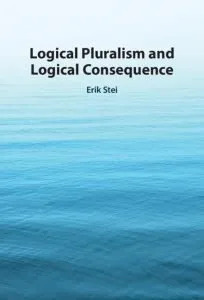 Erik Stei’s Logical Pluralism and Logical Consequence was published early this year (at a disgraceful price) by CUP. From the blurb: “The logical pluralist challenges the philosophical orthodoxy that an argument is either deductively valid or invalid by claiming that there is more than one way for an argument to be valid. In this book, Erik Stei defends logical monism, provides a detailed analysis of different possible formulations of logical pluralism, and offers an original account of the plurality of correct logics that incorporates the benefits of both pluralist and monist approaches to logical consequence.” OK, that looks as if it should be just up my street, as the topic is basic and important and I’m all for calming down debates by trying to draw out what each side has got right. My first impressions, though, on reading early pages have so far not been that encouraging. But I’ll certainly try again, and let you know.
Erik Stei’s Logical Pluralism and Logical Consequence was published early this year (at a disgraceful price) by CUP. From the blurb: “The logical pluralist challenges the philosophical orthodoxy that an argument is either deductively valid or invalid by claiming that there is more than one way for an argument to be valid. In this book, Erik Stei defends logical monism, provides a detailed analysis of different possible formulations of logical pluralism, and offers an original account of the plurality of correct logics that incorporates the benefits of both pluralist and monist approaches to logical consequence.” OK, that looks as if it should be just up my street, as the topic is basic and important and I’m all for calming down debates by trying to draw out what each side has got right. My first impressions, though, on reading early pages have so far not been that encouraging. But I’ll certainly try again, and let you know.
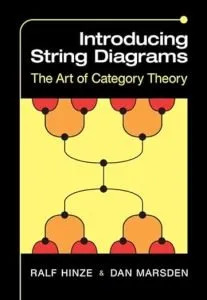 On my desk right now, though, is Introducing String Diagrams: The Art of Category Theory by Ralf Hinze and Dan Marsden, recently published by CUP. This is a comp. sci. book in origin, and it is taking me a while to get the measure of it. But the book comes much praised, so I shall press on in the hope of pennies starting to drop with satisfying clunks …
On my desk right now, though, is Introducing String Diagrams: The Art of Category Theory by Ralf Hinze and Dan Marsden, recently published by CUP. This is a comp. sci. book in origin, and it is taking me a while to get the measure of it. But the book comes much praised, so I shall press on in the hope of pennies starting to drop with satisfying clunks …
Meanwhile, I’ve revised a couple chapters of my own entry-level (and hyper-conservative?) Category Theory II. Both these chapters, one on categories of categories and one on functor categories, have been much revised and in places simplified, so I hope work much better. There remain two groups of chapters to revise, one group on the Yoneda lemma and related stuff, one group on adjunctions. Fun topics. I remain quite undecided, though, about how things will go after this initial round of revisions of old material.
The post What to read? appeared first on Logic Matters.
October 4, 2023
Dvořák: Dumka No. 6 Op. 90
The post Dvořák: Dumka No. 6 Op. 90 appeared first on Logic Matters.



